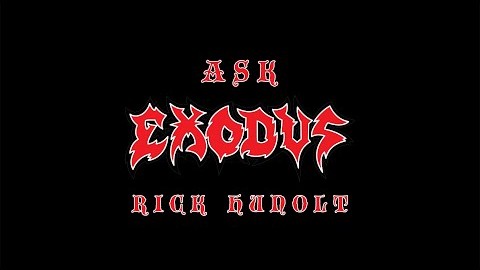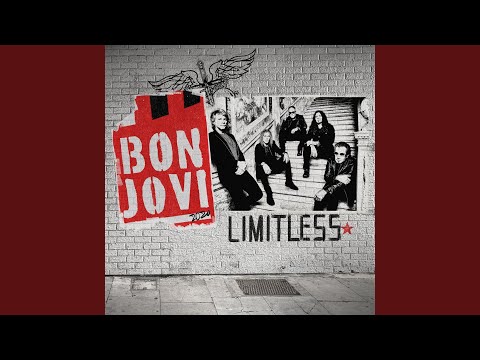
A whole host of classic albums are celebrating the big 5-0 in 2021. 1971 – what a year! Though the birthday celebrations might need to be smaller than usual, you should still give these stone cold classics a blast at full volume – if only to get you through Lockdown 3.0.
David Bowie, ’Hunky Dory’
“Ooh, look out, you rock’n’rollers,” David Bowie playfully baited on ‘Changes’, the opening song from his transformative record ‘Hunky Dory’. It’s a warning that proved prophetic; this is the album that kickstarted the musician’s long standing fascination with artistic reinvention, and saw Bowie turning into the chameleon-like icon that he’s remembered as today. Not only that, but it’s an art-pop masterpiece host to some of his most beloved classics, see: ‘Changes’, ‘Oh! You Pretty Things’, ‘Life on Mars?’ and ‘Kooks’.
Who it influenced: Every keen eared glam rocker trying to break the mould in the early 70s
Black Sabbath, ‘Master of Reality’
With their third album, Birmingham’s Black Sabbath plunged into the world of swampy murk. Their weighty new sound first came about when guitarist Tony Iommi (who had previously injured his hand working in a factory) downtuned his guitar to make playing less painful, and bassist Geezer Butler also lowered register to match him. The result was the brutal, doom-laden sludge of ‘Master of Reality’ – a heavy metal classic.
Who it influenced: An early precursor to grunge, ‘Master of Reality’ influenced everyone from Nirvana to Mudhoney.
Joni Mitchell, ‘Blue’
In 1970, a heartbroken Joni Mitchell attempted to escape the glare of fame and ended up in Crete, where she began laying down the foundations for one of the most gently brutal break-up albums ever written. Backed simply by piano, guitar and dulcimer, ‘Blue’ is bathed in the sort of bright, unforgiving light that might make you wince, were it not so beautifully poetic – ’Little Green’ details the pain of giving up her daughter for adoption and many other songs here explore the loneliness of a life cast adrift. As Mitchell told Rolling Stone eight years after releasing ‘Blue’: “at that period of my life, I had no personal defences. I felt like a cellophane wrapper on a pack of cigarettes”
Who it influenced: Virtually every singer-songwriter who longed to find new perspectives on a well-documented topic – a broken heart.
Marvin Gaye, ‘What’s Going On’
Throughout the ‘60s, Marvin Gaye was best known as “the prince of Motown’, having released over 30 hit singles on the label (including ‘Heard It Through the Grapevine’ and ‘How Sweet It Is To Be Loved By You). Following the death of his singing partner Tammi Terrell, however, Gaye switched paths with ‘What’s Going On’, a stridently political concept album narrated by a Vietnam war veteran and exploring police brutality, war poverty, drug abuse, and environmental issues. Selling over two million copies within a year, it took the pop core of Motown and made it personal.
Who it influenced: Protest artists everywhere.
Can, ‘Tago Mago’
Recorded as a series of sprawling and shambolic jam sessions that were later chopped up, mangled, and layered, ‘Tago Mago’ shows the German experimenters on searing form. Recorded in a rented castle in Cologne by the varied bunch of musicians (Can’s members have backgrounds in free jazz, avant garde composition and intense guitar wizardry between them) it’s a gnarled beast of a rock record. At its most brutal, ‘Peking O’ caterwauls atop pained, demonic lounge jazz like a terrified feline creature who just watched the film adaptation ‘Cats’ – and the psychedelic ‘Mushroom’ is the nearest the krautrockers get to pop.
Who it influenced: It’d probably be quicker to list the artists who weren’t influenced by Can – ‘Tago Mago’ impacted everyone from Bowie to Radiohead.
Carole King, ‘Tapestry’
A powerhouse songwriter – together with her ex-husband Gerry Goffin, she was responsible for smash hits like The Shirelles’ ‘Will You Still Love Me Tomorrow’ and Aretha Franklin’s ‘(You Make Me Feel Like) A Natural Woman’ – Carole King’s second solo album ‘Tapestry’ marked her own breakthrough moment. On the album sleeve, she’s cosied up on a windowsill alongside a fluffy cat; in look and sound, the albums initially oozes a grounded warmth. Fig deeper, and King seems to be searching for a permanent home as the rapidly changing world shifts around her. “Doesn’t anybody stay in one place anymore?” she asks on ‘So Far Away’ – and it’s a yearning that colours the entire album. “I wanna be home again and feeling right,” she urges ‘Home Again.
Who it influenced: Pop greats from Mariah Carey and Celine Dion to Shania Twain and Gloria Estefan.
Sly And The Family Stone, ‘There’s A Riot Goin’ On’
It’s a stark departure from Sly And The Family Stone’s gaudy and psychedelic ‘60s releases, and a creeping sense on unease lingers at the heart of ‘There’s A Riot Goin’ On’. As relations between band members soured and Sly became increasingly unreliable, he recorded largely alone instead, making heavy use of drum machines and overdubbing. The title track filled with slow grooves that tumble along like a syrup-coated slinky, it spoke to the social unease of the early ‘70s.
Who it influenced: Though it was met by some confusion at the time, its innovative recording techniques soon had a huge influence on funk as a whole.
Harry Nilsson, ‘Nilsson Schmilsson’
With his seventh album ‘Nilsson Schmilsson’, Harry Nilsson stepped further away from the jangling pop of ‘Everybody’s Talkin’, and drew from rock’n’roll instead. By then, The Beatles had already namechecked him as their favourite artist, and the year after they broke up, Nilsson released his best record. From the bleary-eyed piano bashes of ‘Gotta Get Up’ to his flawless cover of ‘Without You’ and the swooning ‘Moonbeam Song’, it’s the sound of a sometimes overlooked songwriter at his creative peak.
Who it influenced: John Lennon was possibly the biggest Nilsson fan going – he once backed him as President.
Funkadelic, ‘Maggot Brain’
Kicking off an album with its most immediate, gate-way hit? Not if you’re Funkadelic – the George Clinton led funk-rock outfit who made warped and doomy psychedelia. The mythology around the squalling, 10-minute guitar solo that opens ‘Maggot Brain’ is well documented; high on LSD, Clinton asked Eddie Hazel to play as if he had just been told his mother was dead. The wah-wah-covered result sounds like pure, unfiltered grief being channelled through six-strings. It’s also representative of ‘Maggot Brain’ as a whole – gloomy, mind-melting and intense.
Who it influenced: Childish Gambino’s ‘Awaken, My Love!’ might not exist without the immense influence of ‘Maggot Brain’
Led Zeppelin, ‘Led Zeppelin IV’
By the time the ‘70s rolled around, Led Zeppelin were one of the biggest rock bands in the world – orbiting it on their own private jet, the Starship, and picking up a reputation for hedonism and hotel-trashing along the way. And with their untitled fourth album, the band chose to remove their likenesses completely in response to detractors claiming that they were riding on hype alone – here, the four-piece are represented by symbols. As well as being Led Zep’s biggest selling album, it’s also home to some of their greatest songs: ‘Black Dog’ and ‘Stairway to Heaven’ among the biggest hitters.
Who it influenced: If Wayne’s World is to be believed, this album inspired every amateur guitar shop noodler going: ”No ‘Stairway’! Denied!”
Al Green, ‘Al Green Gets Next To You’
Featuring the bright and brassy backing of Hi Rhythm Section – the in-house band at Memphis soul label Hi Records – ’Al Green Gets Next To You’ came a couple of months before Al Green’s best known classic track ‘Let’s Stay Together’. After early releases won constant comparisons to other singers like Sam Cooke, Jackie Wilson and James Brown, this is the record where Green found his own voice. Come for the slinking cover of The Doors’ ‘Light My Fire’ and stay for the yearning ‘Tired Of Being Alone’.
Who it influenced: Legions of younger artists mixing gospel music with secular soul.
Aretha Franklin, ‘Live at Fillmore West’
Recorded at a cultural landmark of San Francisco, the Fillmore West concert venue, this album, which turns 50 this year, is a masterclass in the live album. From the moment Franklin kicks off with a frenetic, punk-paced cover of Otis Redding’s ‘Respect’ the relentless energy doesn’t let up – a cheering crowd urging her on in the background all the while. ‘Spirit in the Dark’ speeds along for six glorious minutes, before the legendary Ray Charles pops in for the reprise in just one stand-out moment; and elsewhere Franklin transforms slightly morose numbers such as ‘Bridge Over Troubled Water’ and ‘Eleanor Rigby’ into inventive, soulful reimagining.
Who it influenced: Everybody with their finger hovered over the ‘bells and whistles’ button – with ‘Live at Fillmore West’ Franklin made immense artistic accomplishment sound like an effortless breeze.
Bill Withers, ‘Just As I Am’
Even as Bill Withers shot to fame with ‘Ain’t No Sunshine’, which features on this debut album, he refused to resign from his job as an assembler for a variety of aircraft and car companies. On the album cover for ‘Just As I Am’ he’s pictured at Weber Aircraft holding his lunchbox. It’s a down-to-earth approach befitting the record, which has an understated folkiness as it explores complicated subject matter. Closing track ‘Better off Dead’ is a painful listen, recounting the suicide note of an alcoholic whose family have left them. And ‘I’m Her Daddy’, the plea of a father who never got to know his newly-discovered daughter Lucy, is equally affecting.
Who it influenced: Heartbroken songwriters everywhere – ’Ain’t No Sunshine’ is surely the definitive break-up song.
The Doors, ‘L.A. Woman’
The final Doors album to feature lead singer Jim Morrison during his lifetime, ‘L.A. Woman’ sprang out of conflict and uncertainty – Morrison had recently been convicted for profanity and indecent exposure. Not to mention that the band’s long-time producer Paul A. Rothchild quit – according to Rothchild ‘Love Her Madly’ sounded like ‘cocktail music’. Despite its rocky beginnings, ‘L.A. Woman’ is up there with The Doors’ greatest work, digging deeper into Blues territory and closing with ‘Riders on the Storm’
Who it influenced: The shape of LA Blues that followed
John Lennon, ‘Imagine’
These days, ‘Imagine’s title track is remembered as John Lennon’s signature song – with wildly varying results, it has now been covered by everyone from Emilie Sande and the Glee Cast to Diana Ross and Elton John. But as a whole, Lennon’s second solo album, frequently deals with the fall-out that followed the Beatles’ break-up and takes on political issues with a deftly administered sugar-coating of pop-rock.
Who it influenced: An entire horde of well-meaning celebrities at the beginning of the coronavirus pandemic, unfortunately.
T.Rex, ‘Electric Warrior’
Trading in folksy leanings for flamboyant absurdity and often credited as the first ever glam rock album, this record knits together swaggering, thumbs-in-pockets rock’n’roll with Marc Bolan’s increasingly surreal lyrics: “Just like a car / You’re pleasing to behold / I’ll call you Jaguar / If I may be so bold,” he sings on ‘Jeepster’. Sexy, ridiculous, and tongue-in-cheek all the while, it’s the sound of rockstar attitude meeting a wry smirk.
Who it influenced: Bolan’s long-standing glam rock rivalry with David Bowie pushed both artists to break down boundaries.
Rolling Stones, ‘Sticky Fingers’
With a crotch shot pasted across its front cover, the sleeve for ‘Sticky Fingers’ leaves little to the imagination. The concept was dreamt up by Andy Warhol and photographed by members of his Factory collective – early pressings featured a fully-working zipper. It was the perfect cover for Rolling Stones’ best album to date, which took all of the band’s usual touchstones – sex, drugs, rock’n’roll – and imbued them with an irresistible blues-tinted swagger.
Who it influenced: 1971 also marked the first appearance of Rolling Stones’ tongue and lips logo, which set the visual standard for every other rock band going.
Janis Jopli, ‘Pearl’
Backed by The Full Tilt Boogie Band and produced by Paul A. Rothchild – best known for his work with The Doors – Janis Joplin’s final album ‘Pearl’ captures the raw power of a true force in rock music. It was released three months after Joplin died aged 27 and parts of the album remain incomplete (Joplin hadn’t yet recorded vocals for instrumental track ‘Buried Alive in the Blues’). In particular, ‘Me and Bobby McGee’ and ‘Cry Baby’ remain two of the best-loved moments in her entire back catalogue.
Who it influenced: Stevie Nicks, for one. “She sang in the great tradition of the rhythm & blues singers that were her heroes, but she brought her own dangerous, sexy rock’n’roll edge to every single song,” Nicks later said. “She really gave you a piece of her heart.”
Alice Cooper, ‘Love it to Death’
‘Love it to Death’ saw its creator swerve away from murkier territory into finely tuned hard rock, and marked a breakthrough moment for Alice Cooper. Fledgling producer Bob Ezrin (who later worked with KISS, Lou Reed and Pink Floyd) came on board for the album and encouraged the band to tighten up their sound; later, the group regarded him as their very own George Martin, The Beatles’ own go-to producer) ,Its biggest singles ‘Caught in a Dream’ and ‘I’m Eighteen’ brought more punters than ever along to live shows, where fans were treated to brilliantly over-the-top sequences with straitjackets and electric chairs. Within a few years, the shocker and his pals were one of the biggest and best rock bands in the world.
Who it influenced: Sex Pistols, Ramones and aspiring punks everywhere.
Leonard Cohen, ‘Songs of Love and Hate’
With one song about the inner monologue of Joan of Arc as she was burned at the stake (‘Joan of’ Arc) and another painting the picture of a shivering and lonely morning (‘Famous Blue Raincoat’), there’s one emotion that runs riot on ‘Songs of Love and Hate’: misery. And with that immediate recognisable monotone vocal – both furious and breaking apart – Cohen pulls gloom aside and exposes its innards. Sadness has rarely sounded this poetic.
Who it influenced: A whole load of his contemporaries, including Joni Mitchell, Neil Young, Lou Reed and Bob Dylan.
The post All of these classic albums turn 50 this year appeared first on NME | Music, Film, TV, Gaming & Pop Culture News.








